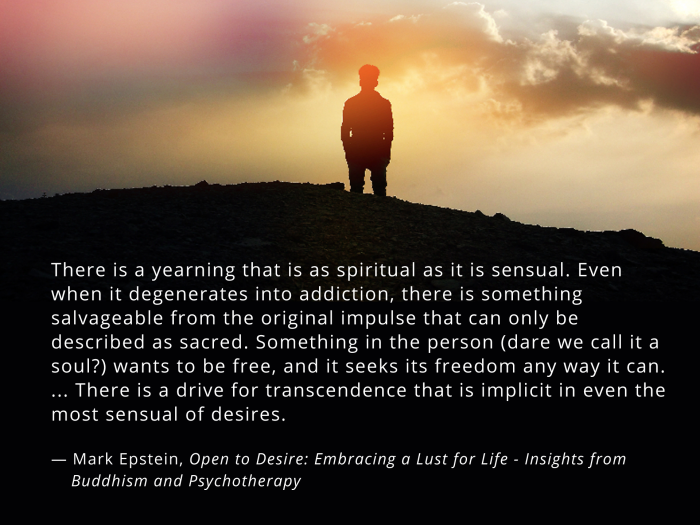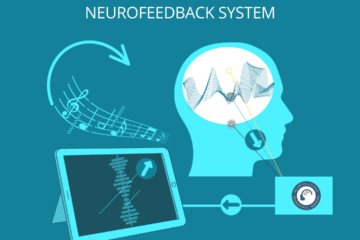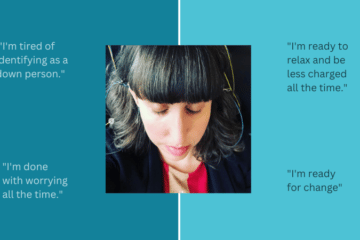In my private practice at Buddhist Psychotherapy NY, I work with people in recovery or struggling to find their way there.
The First Noble Truth in Buddhism is: suffering is inevitable in this life. The Second states that the cause is clinging. When we experience addiction, this “clinging” aspect gets heightened to the nth degree. On a subtle (and sometimes not so subtle) level, our subconscious screams: “This experience isn’t good enough as it is!” I have often heard people struggling with addiction say that the best party in the world was just not exciting enough, even in New York City. There needed to be more sex, more cigars, more drugs, more food, more rock, and more roll. However, classically, I’m somewhat saddened that a harsh and aggressive approach is used in treating addiction. Often, the idea is to get on board with the counselor or “you’re out.” And instead of taking a Middle Way, it is suggested to be completely abstinent or there is no other way. While this is true for most struggling with addiction, this is not always accessible in the beginning and potentially a harm-reduction approach is a better start.
Approaching how one can be “middle” in terms of meeting emotions, relationships and experiences, is already a good start.
An addict does not need to be any harder on themselves; they already have an imaginary, berating entity living in their heads, which is part of the original dilemma. Traditionally, there is also the idea that the addicted part is “bad”, needs to be strong-armed into extrication, and that one just needs more will-power and control to stop this demon. We all need a plan of action for harm-reduction and refrain, using discrimination for what is healthy or not, but our attitude is what needs adjusting. What if we were to be more friendly to the addicted part? To actually feed it what it needs instead of ignoring its screams?
Here are some compassion-based pointers for helping in recovery:
- The addiction served a purpose When anyone encounters pain, they use coping mechanisms or find ways to move away from that pain. It’s human nature; if we burn our hand on the stove, we quickly pull our hand away in reaction. In facing addiction head on, it is important to see what kind of purpose it has served. Did it help to numb or move away from pain? Did it enhance a situation that seemed boring or anxiety provoking? Did it seem to make you feel “freer to be yourself?” The most important point is to take an honest look at one’s self and see what might be occurring in one’s experience. Looking requires the utmost bravery and courage. Considering the absence of a numbing agent, sobriety usually brings more feeling and emotion to the surface; so it is imperative that we have a way to work with emotions, to sit with them gently, to understand we don’t have to act on them and that they will eventually pass.
- The Jenga block concept Once the purpose seems clear, it’s important to find direct replacements. I refer to the Jenga block concept where we need to change the rules of the game a little bit: If we remove a Jenga block at the bottom of the structure, we better replace it with something or the structure will feel too fragile! As we are well aware of the game, the more we take out, the more wobbly the structure becomes; humans aren’t very different. The addiction has been helping with survival and the removal of it prematurely feels like a threat to the ego and identity. For example, if doing $200 of cocaine a night made Joe “feel more like himself”, we have to start to think of other ways for him to connect with himself. Was Joe formerly creative? Felt more like himself in certain activities or places? Does he feel most like himself when around others who understand him? Then we work to weave these ways of feeling “more like one’s true self” into daily life; for instance, belonging to a new community, developing one’s artistic practice or hiking through nature with no obligations.
- Stability Stability Stability It is important to then take a holistic approach towards one’s life, especially in early recovery when one feels most fragile. Quite simply, getting enough exercise, proper nutrition, and sleep is very useful during this stabilization period.
- Isolation is the enemy Anyone who’s ever been addicted knows that social isolation before and during recovery is a slippery slope; and for some reason those that live in New York City can still feel alone in a sea of millions of people. It’s important to identify people in your life or people you could meet that “get you.” Often times, there is an evaluatory period of people, places and things that were formerly associated with addiction, and there is a realization that in order for recovery to be supported, some of these areas need to be greatly modified or avoided. Early recovery is a time to assess if your relationships and places you frequent are in line with health. Moving forward, this is also a constant assessment throughout recovery.
- Stinkin’ Thinkin’ Once sober, thoughts become clearer that are related to addictive thinking. I once heard someone in recovery for 25 years say, “i still think of having a beer when in an uncomfortable social situation. I think it will temporarily make it all easier to get through.” This is stinkin’ thinkin’. It may come up quite regularly so it is important just to identify it as “stinkin’ thinkin’” and then know that there is a choice not to listen or follow through with it. This is when we have the ability to ride our thoughts, not allowing them to ride us.
- Get support For as many people that use A.A., N.A., O.A., D.A., S.A. and Alanon as support in recovery, there are just as many who don’t like the 12 step system. The most common complaint I have heard is the non-belief in God. It’s unfortunate, because time and again someone will avoid the 12 steps completely due to this fact. Many times there are open discussions about how this interferes with the process in the “rooms”, and there have been groups formed to work around this caveat such as A.A. for atheists, Buddhists and non-believers alike. That being said, God can, and should, be interpreted in any way that fits with your idea of a higher power. Moreover, there are now recovery programs for Atheists as well as those interested in Buddhism, such as Refuge Recovery. The added support of a system like this, along with having a sponsor or a trained therapist can greatly aid in recovery.7. You may have to hit bottom Some people don’t have to hit bottom to get into recovery, but many do. Bottom is when circumstances can’t seem to get any lower or worse. And everyone’s bottom is different; this may be the loss of one’s job, spouse and friends or it might be one night of losing your dignity or it might be developing a serious health condition. So if you are far off from recovery, ask yourself, how far from bottom are you? How bad and intolerable do things need to get before you reach a bottom? One of the main mechanisms that keeps addiction in place is “ignorance”, turning a blind on to one’s current circumstances, pain, and suffering.
As a Buddhist Psychotherapist, I often have the application of the Four Noble Truths to all life’s circumstances in the back of my mind.
When the Second Noble truth, clinging, has gotten out of control, it’s hard to ever believe that life could be different. But alas, it’s important to know that there’s a Third and Fourth Noble truth! Three: There is a way to work with suffering and clinging and Four: There can be a path towards health, wellness and sanity. One should never give up hope. All circumstances are workable with the right resources and a touch of personal compassion.



